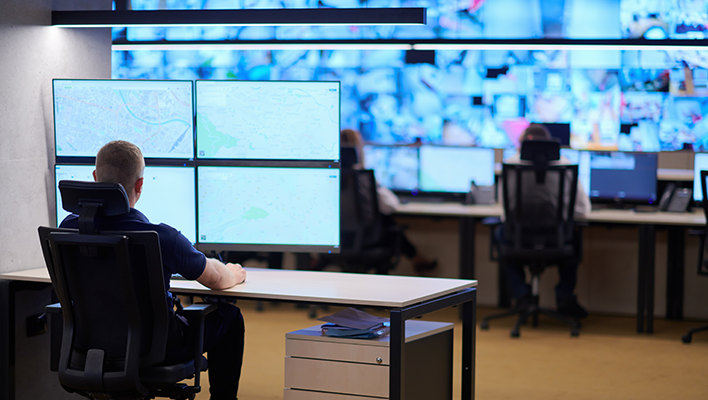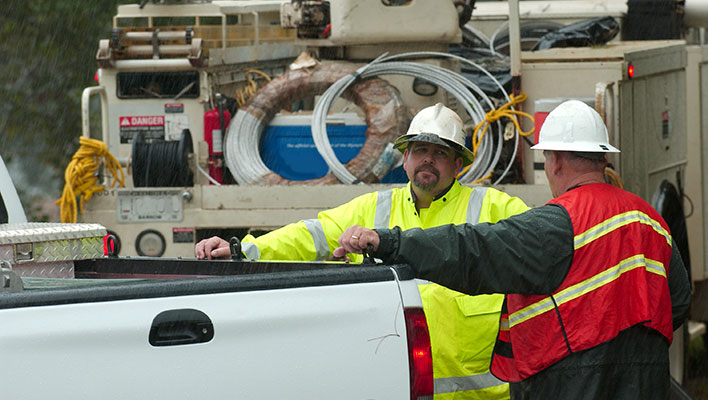Chris McClain is engineering supervisor at Southern Company and is an advocate for helping the electric transmission and distribution industry advance power restoration by leveraging technology to seamlessly manage damage assessment and repair. Bringing insights from the front lines of digital utility transformation, his blog series walks readers through the journey from managing mountains of paper feeder maps to mobile workforce management and power restoration in one of the country’s frequent storm hotspots.
It always seems like we’re responding to mother nature here in the Southeast. A nonstop storm season demands nonstop power restoration. The area’s unique geography, mountainous terrain, and proximity to the Gulf of Mexico sets us up for severe weather throughout the year. Our storm “hotspot” means we’re continuously managing damage to electric utility infrastructure from winter storms, hurricanes, tornados, straight line winds, and thunderstorm downbursts. Consequently, power restoration skillsets need to be robust and continuously improve.
Advancement of damage assessment and repair requires people, processes, and technology to change. From my experience managing digital transformation and organizational change, achieving highly effective storm restoration for power distribution is a matter of continuously refining best practices in the field. Yet many electric utilities, cooperatives, and municipal providers struggle with technology pieces like mobility because digital transformation among field crews tends to lag the innovative restoration best practices deployed to the field.
As an industry, we have done a great job hardening our systems, building resilience, and improving reliability. Today’s power grid is outfitted with sophisticated digital infrastructure, including integrated distribution management systems with high-speed sectionalizing devices and fault isolation and restoration services that automatically detect faults in system current, open, and close the right switches to pick up load from alternate sources and keep customers energized.
Power providers depend on a wide array of information systems. These include outage management systems employing predictive analytics to anticipate faults and focus damage assessments. Effective storm response also requires mature GIS capabilities for precisely mapping service areas, lines, equipment, and other assets.
The power transmission and distribution industry has excelled at solving the digital transformation puzzle when it comes to back office systems and building digital infrastructure. Now, I believe, the missing puzzle piece – the piece we need to fully unleash restoration potential – is mobile workforce management.
If your team is looking to further advance damage assessment and repair, a clear mobile workforce management technology strategy will help you leverage and extend the value of other grid technology investments by bringing restoration systems together, including GIS and outage management. By doing so, teams can improve situational awareness of people, work, and assets across the organization.
Getting to your digital transformation destination isn’t a straightforward journey of building or buying the right technology. From my own experience, there is a natural evolution that leads to early wins and incremental progress that positions organizations for success.
If your team works with the electric grid, ask yourself a few questions that will indicate whether it’s time for your own mobile workforce management digital transformation:
- Do you have a strategy for mobile workforce management and a plan for guiding digital transformation with people and purpose?
- Do field staff or contractors rely on paper feeder maps or binders with standard operating procedures?
- Are crews hungry for digital tools they can use to work more efficiently or better communicate with the back office?
- Is your team considering developing its own mobile workforce management system in house?
- What steps have you taken recently to help lineworkers make better decisions and improve their safety?
Effective storm restoration requires equal parts providing crystal clear situational awareness for everyone involved and providing crews the information they need to take the best next step, whether that’s stepping back from danger or stepping into action. The right technology solutions and mobile workforce management approach can make the difference in accomplishing both goals.
Our industry is an open one where power providers freely exchange ideas and call on each other for mutual assistance during storms. By pooling our knowledge of restoration best practices, we can better support each other and our customers.
To this end, I want to share some experiences that I hope your team can apply to your own digital transformation. Over the next five blog posts I’ll share my mobile workforce management journey, lessons learned, and goals for continued improvement. Please reach out along the way with any questions or ideas.




